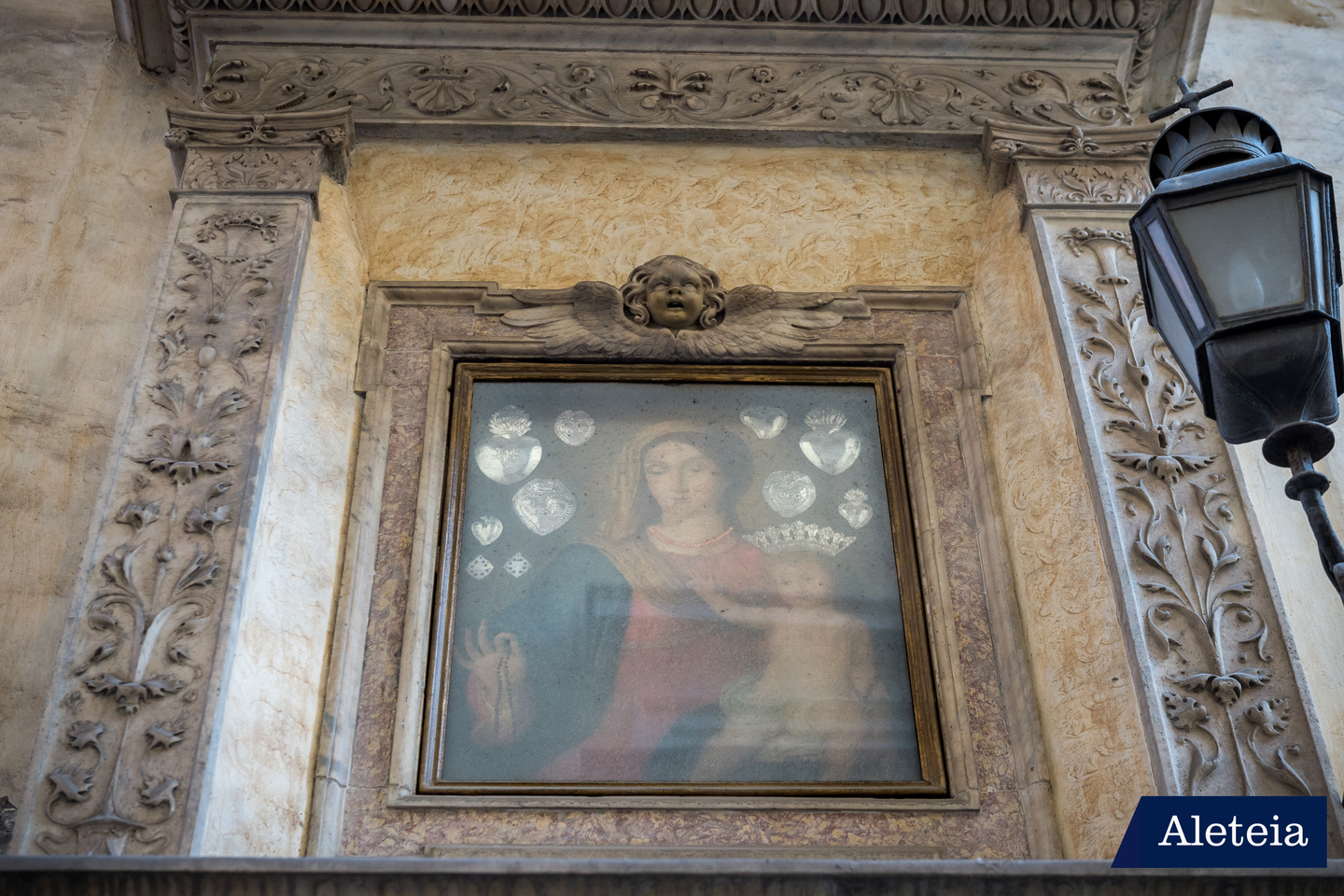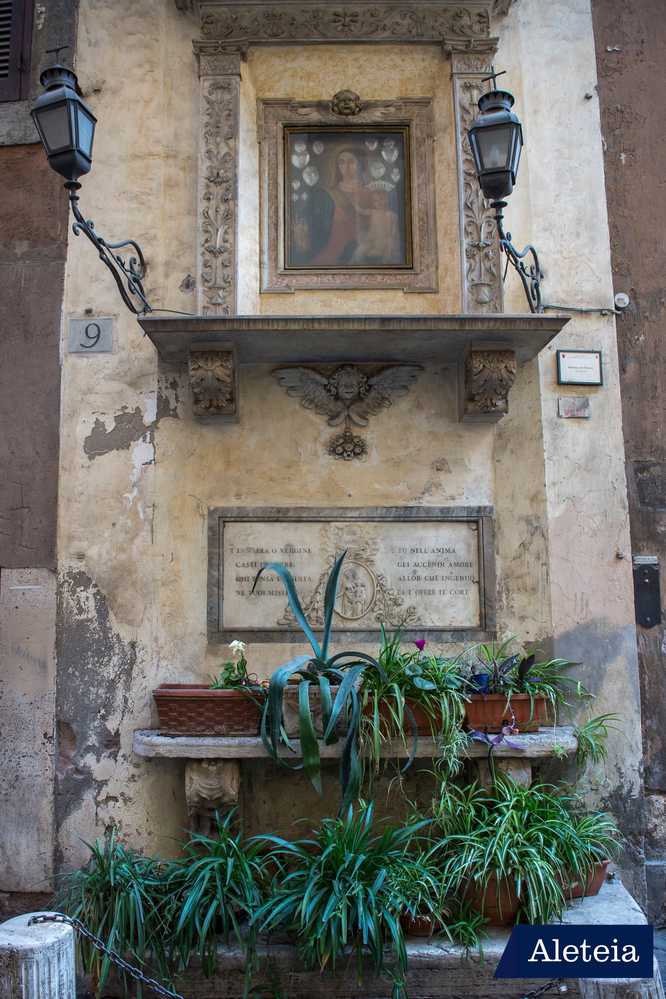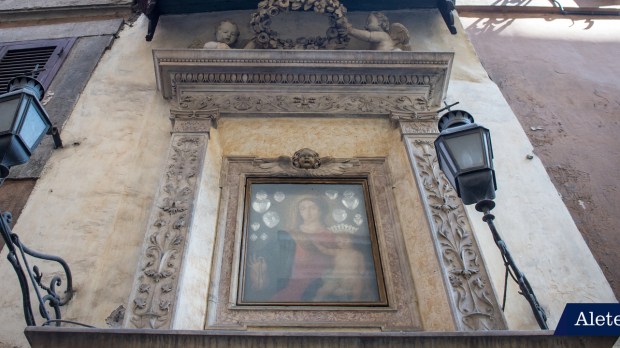We continue with our daily tour this month through a particular artistic expression of Marian devotion: Rome’s “Madonnelle” (“little Madonnas”). These are images of Mary—some of them miraculous—scattered throughout the streets and alleyways of the city. They are the object of much popular devotion. Follow the series here: Little Madonnas of Rome
Madonna of the Rosary: Via dell’Arco della Ciambella

Today, only a fragment remains of the Baths of Agrippa, the most ancient thermal baths of Rome: the suggestion of an arch of the great round hall that was at the heart of the entire complex. The hall was popularly called “The Ring,” “The Tondo” (a term referring to a circular work of art), or “The Tower”: it was a small step from there to the nickname “Bundt cake.” The name is still used today to indicate the street that passes under the arch: Street of the Arch of the Bundt Cake (“Via dell’Arco della Ciambella). It is located a couple of blocks behind the Pantheon, right in the center of the city. Against a wall that was once part of the baths, there is a small outdoor shrine, dedicated to the Madonna of the Rosary. The current image is a 19th-century copy of the original image, one of the 26 declared to be miraculous because they moved their eyes, “a miracle which continued for three weeks.”

This phenomenon took place in 1796 in conjunction with the French invasion of the Papal States. That original painting was removed by the owners of the building (the Capparucci family of marble workers) when they moved, and today its location is unknown. The Madonna appears dressed in red, wearing a blue mantle and with a golden-yellow veil covering her head. Around her neck, she wears a coral necklace. She carries her Son in her arms, as He rasies his right hand in blessing. Between her right thumb and forefinger, she holds a rosary. The painting has been inserted in a marble frame; all of this is surrounded by a Renaissance-style marble shrine.
Two pilasters decorated with plant motifs rise from a shelf below the image. Above the lintel, two cherubs hold a crown of flowers. An ornate wooden canopy still hangs above it, and two lamps flank the image. At the feet of the shrine are a few travertine steps, which could function as a kneeler, but which are covered with potted plants and vases of flowers—a sign of devotion. A few verses are engraved on a marble plaque: “He who thinks or meditates on your mysteries / raises up to you chaste thoughts, / and you inflame love in his soul, / when he innocently offers you his heart.”
~
Follow the series here: Little Madonnas of Rome
See more articles like this at Aleteia’s Art & Travel section.

